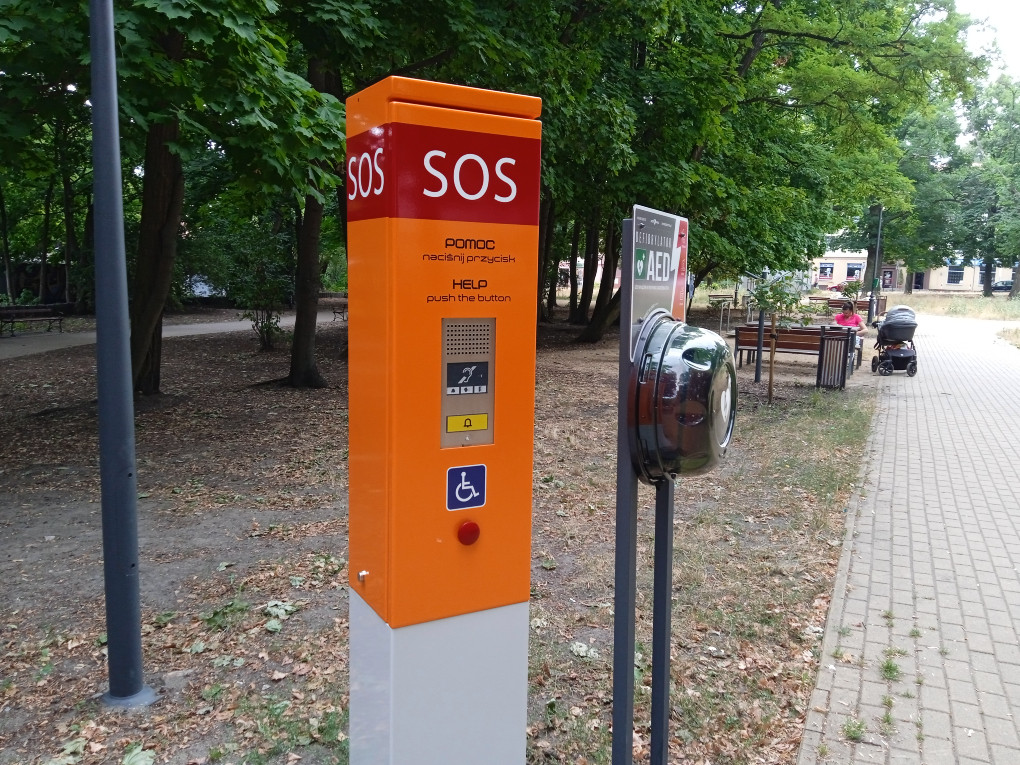In the cities of the future, audio technologies are not just an innovation—they’re a necessity. They allow cities to “listen” not only to their infrastructure but also to the people who use it every day. Through this technology, cities become safer, and residents, commuters, and tourists can move more efficiently and comfortably. Integrating audio systems with video surveillance enables not just passive recording of events but active response, offering a more complete view and significantly enhancing public space safety.
Why is audio technology essential?
While video surveillance is a cornerstone of urban security, it alone cannot interact with people on-site—it only shows a limited area, leaving the rest unchecked. In emergency situations, the ability to communicate quickly and directly with people on the ground is crucial, and this is exactly what audio systems provide. The combination of visual and audio data is a significant step toward a smart city that not only sees but also actively responds to the needs of its residents.

Audio technologies shaping safer cities
PA systems and IP speakers: immediate response to threats
- In crisis situations, such as potential terrorist threats or large gatherings, PA systems play a key role. With strategically placed IP speakers, control center operators can communicate with people in threatened areas, warning them of danger or guiding them on necessary actions. This is not only an effective preventive measure but also a way to enable faster intervention that can save lives. Commend’s IP-based systems also allow direct communication with people on-site, which supports effective de-escalation.
Intercoms and help points in public spaces: support within reach
- Cities can be equipped with intercoms located in strategic spots, such as public transit stops, city centers, and recreational areas. These points allow easy and quick access to help if needed—with just a press of a button, users can connect with an attendant in the control center. This means that residents and tourists can feel safer, knowing that assistance is always within reach.
Cameras with speaker functions: synergy of visual and audio
- Cameras equipped with two-way audio, known as “speaking cameras,” represent a new generation of devices that allow for not only monitoring but also actively influencing the situation. Operators can not only observe what is happening on-site but also respond in real-time by issuing warning messages to people approaching dangerous areas. Direct audio communication increases response effectiveness and can prevent incidents by surprising potential perpetrators.

Use cases: How audio creates safe spaces
1. Safe streets and parks
- In parks, underpasses, and other dimly lit areas, combining smart lighting with audio systems can significantly improve safety. When an audio system detects sounds indicating potential danger, it can automatically activate lights and issue warning messages, discouraging unwanted actions and enhancing residents' sense of security.
2. Public transportation stops
- At public transportation stops and stations, audio systems support passengers by providing information on schedules, wait times, and instructions in emergencies. Interactive displays and speakers allow for immediate assistance or support, such as directing users to the appropriate locations.
3. Critical infrastructure: ensuring protection and response
- For critical infrastructure, such as energy networks or water treatment facilities, audio systems are crucial for perimeter protection. These solutions allow both access control and issuing warning messages in case of detected threats, providing an additional layer of security.
The future of safety and comfort in smart cities
Audio technology in smart cities is not just a tool for responding to threats but also a way to enhance the comfort of residents’ lives. With advancements in automation and artificial intelligence, these systems may offer even more advanced functions in the future, such as automated voice assistants that answer questions, indicate nearby tourist attractions, or provide information about schedule changes.
In the future, the integration of audio and video systems could play a key role in managing autonomous city vehicles, allowing dynamic adjustment of messages based on passenger needs and real-time route conditions.
Audio is becoming the voice of smart cities – it not only helps monitor but also directly supports residents and tourists, enhancing safety and comfort. In cities undergoing dynamic development, this technology is an invaluable aid in incident response and in day-to-day public space management. We invite you to learn more about our solutions in our latest newsletter or visit us at Smart City Expo in Barcelona, where you can see firsthand how we’re giving cities a voice.

